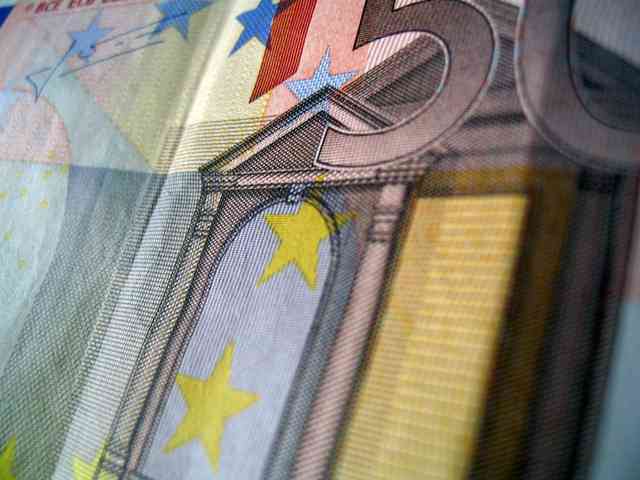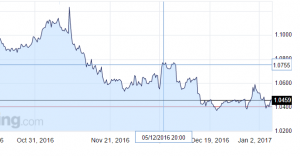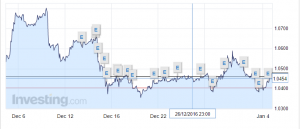The Euros performance in 2016 began with a very bearish tone and many believed that this would be the year that the USD would achieve parity with the Euro.

The first real tremors came when the European Central bank cut interest rates from 0.05% to 0% in and heavily revised their strategy in order to boost the single currency economies. In a move to encourage growth and activity in the Draghi outlined a bold plan to expand its money printing program, reduce interest rates to 0% and revise bank deposit rates into further negative territory.
Draghi also was clear that the rates would remain low for at least a year and warned of negative inflation. The deposit cut to -0.4% essentially meant that banks would be charged to keep their money, the desired effect being to encourage lending.
Eurozone catches BREXIT’s Cold
Following the UK’s decision to leave the European union sterling lost much ground against the Euro with the GBP/EUR sliding from 1.30.65 on the eve of Brexit to 1.2305 on the 24th of June in total the Pound lost more than 7% against the Euro and experienced some of the heaviest losses in history.
The Euro unfortunately due to its relation with the UK bore the brunt of the market tremors and also lost 3% in a day. The reason being that many viewed the UK’s historic decision to part ways with the EU as a signal for other doing the same, leaving the union extremely vulnerable.
Following the Euros initial losses, the currency stabilised as many interpreted the UK’s departure as more negative scenario for the UK rather than the rest of Europe. Over the coming weeks the Euro recovered which in turn left the GBP/EUR at its weakest position for years, the lowest point came on the 11/10/2016 when the GBP/EUR reached 1.0967.
Trump fever puts the Euro under pressure
Following the unexpected US presidency result the Euro experienced further shock as the USD followed a progressively upbeat path. Once again the Euro found itself under pressure following the USA’s choice to elect the republican underdog Donald trump. The EUR/USD devalued sharply from 1.1231 to 1.10 on the 9th following the ratified presidency outcome. The Euros losses have continued against the dollar following Trumps pro-business approach and his promise to overhaul US fiscal policy.
Further downward trend for the Euro in December
December became a month that the Euro would have truly loved to have forgotten following the ECB’s decision to extend its asset purchasing program. The extension would see the ECB prolong the asset purchasing program by nine months but in smaller quantity revising the amount €80Bn per month to €60Bn accusing the head of the ECB of ‘tapering light’. Markets had anticipated that the ECB would continue with its initial to continue the asset purchasing and many were left confused by the reducing in overall investment.
During the meeting Draghi also touched upon inflation, which remains an area of concern. He stated that consumer pricing forecasts over the next three years would run to 0.2% in 2016, 1.3% this year whilst 2018 was revised lower. Following the announcement, the Euro rallied to a month high before returning to EURUSD rate of 1.08.
Just short of a week later the Euro’s troubles deepened as the FED as anticipated increased their interest rates from 0.25% to 0.50%. Markets had priced in the hike however due to the nature of the US buoyant economy Janet Yellen provided another sting to the Euro, announcing that 2017 would more than likely bring 3 further successive interest rate hikes. The Euro since the Fed announcement has progressively weakened against the Dollar and many believe that 2017 will provide a similar backdrop to the EUR/USD pair.
2017 a year to look forward to for the Euro?
It is extremely unlikely that 2017 will be the year the Euro turn its self around. Primarily from a political stand point there is much more scope for further negative volatility. Both France and Germany will be holding general election in 2017. France takes to the ballots in May and with Marine Le pen having the potential to qualify to the final vote an Anti- European candidate would surely weaken the single currency.
Germany is yet to set a date for its election however they must at very latest take to the ballots in October. As the hub of the Euro any off piste polls results could weaken the Euro or at very least provide volatility.
Brexit could affect the Euro also. Although the UK’s transition away from the EU will depend on the final outcome let’s not forget that the UK is currently one of the EU’s largest financial contributors. A deal which was to ensure that the UK retained pass porting whilst reducing its financial burden could be viewed as a negative for the Eurozone. Currently the UK enjoys the best growth of all the G20 nations and the EU are unlikely to want to disassociate themselves with permanently with that.
Finally, as mentioned above the US had advised of its scope for three further rate hikes in 2017. It’s extremely likely that they would continue along the cautious path of raising incrementally 0.25% a time. However, if the US economy continues to strengthen could there be potential to raise in larger increments? If yes, the EUR/USD would surely sink into negative territory.
If you require guidance on an upcoming international payment or would like to discuss a potential future transfer, please feel free to contact [email protected]

